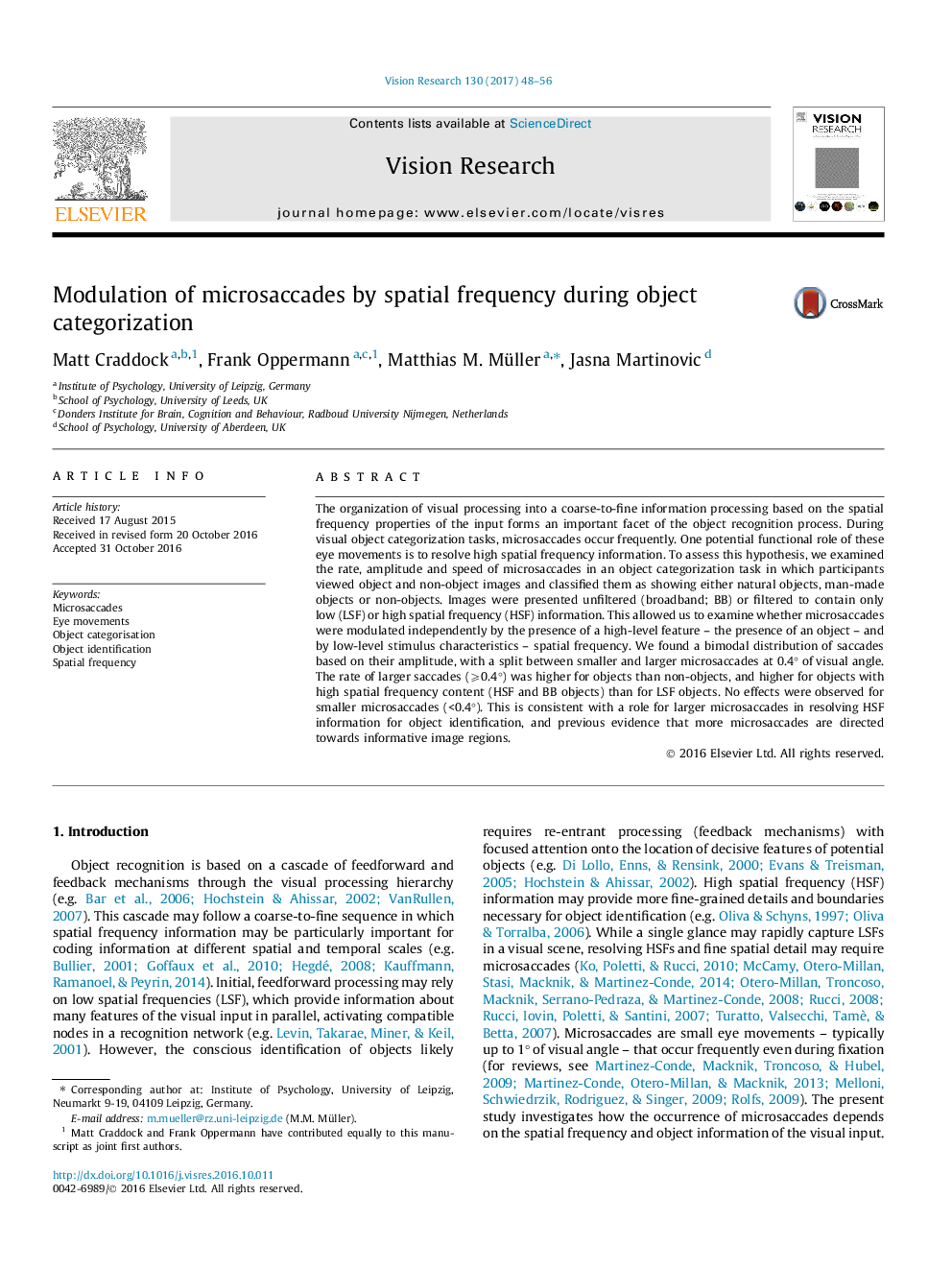| Article ID | Journal | Published Year | Pages | File Type |
|---|---|---|---|---|
| 5705931 | Vision Research | 2017 | 9 Pages |
Abstract
The organization of visual processing into a coarse-to-fine information processing based on the spatial frequency properties of the input forms an important facet of the object recognition process. During visual object categorization tasks, microsaccades occur frequently. One potential functional role of these eye movements is to resolve high spatial frequency information. To assess this hypothesis, we examined the rate, amplitude and speed of microsaccades in an object categorization task in which participants viewed object and non-object images and classified them as showing either natural objects, man-made objects or non-objects. Images were presented unfiltered (broadband; BB) or filtered to contain only low (LSF) or high spatial frequency (HSF) information. This allowed us to examine whether microsaccades were modulated independently by the presence of a high-level feature - the presence of an object - and by low-level stimulus characteristics - spatial frequency. We found a bimodal distribution of saccades based on their amplitude, with a split between smaller and larger microsaccades at 0.4° of visual angle. The rate of larger saccades (⩾0.4°) was higher for objects than non-objects, and higher for objects with high spatial frequency content (HSF and BB objects) than for LSF objects. No effects were observed for smaller microsaccades (<0.4°). This is consistent with a role for larger microsaccades in resolving HSF information for object identification, and previous evidence that more microsaccades are directed towards informative image regions.
Related Topics
Life Sciences
Neuroscience
Sensory Systems
Authors
Matt Craddock, Frank Oppermann, Matthias M. Müller, Jasna Martinovic,
